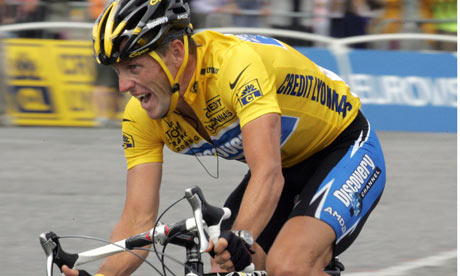Part 3: Drugs and the humble realities of professional road racing
0By Bryan Perkins
What we have to acknowledge is that WHEN the peloton was rife with drug use (there is still debate if it is – check the link at end of this article) – just to keep up and be mildly competitive you had to juice up. Before the mid 1980’s drugs only made you feel like you were going faster (which was nice, real nice as it masked a lot of the suffering, the essential beauty of professional cycling). Human beings have always used drugs to escape: covering up pains and frustrations; to make us feel better and to improve our well-being, however artificially contrived and illusory. And cycling racing was no different, if not a haven for the endless search of substances to alleviate the pain.
The major leap in the use of drugs was EPO, as this made a distinct difference in rider performance. Put simply EPO stimulates the bone marrow to produce more oxygen rich red blood cells, allowing the body to pump more oxygen around the body. Tests have shown that a rider can achieve a 10% improvement in aerobic performance; that’s enormous when you consider the competitive margins in top tier cycling (or other endurance sports where oxygen … is literally … your lifeblood).
Let’s just put that into context with this year’s TdF general classification. Froome won by 1 minute and 15 seconds over Quintana, slogging his guts out for a total of 84 hours and 46 minutes up and down the biggest mountains in France. The margin of victory was down to a fraction of a % in overall time, so when you have a drug which can produce such large gains – it’s very understandable that riders aspiring to a professional career had to join the dark side with blood doping. And again for simplicity sake – a “normal” person will have a red cell volume of about 40%, whereas a world class athlete (say 5% of the population) will have red cell volume of up to 50%. You may remember stories of riders dying in their sleep with the early use (I mean abuse) of EPO. Science and the doctors smartened up their acts, but in these early days a rider’s blood literally turned to a gluggy sludge during the night when their heart rates were at their lowest. Their blood was incredibly thick and rich with red blood cells, with a red cell volume of upto 70-80 %. We had stories of riders setting their alarms to wake during the night just to keep their blood flowing (pedalling for half hour or so), or risk death because their blood was too heavy and thick for their poor hearts to pump.
Without wanting to bore you with more science – the blood tests you hear about to day in essence check whether a rider has recorded a dramatic jump in their red cell blood level or it is over the 50% threshold (called the haematocrit blood level). 1% of the population (often your very elite endurance athletes) may have a natural haematocrit of over 50%, but 50% is the magic mark. Any rider with a reading above this raises suspicions of blood doping. It is not natural. Pantani – the Italian cycling great – recorded a haematocrit level of 60.1% in 1995, and was banned in Tour of Italy in 2004 for two weeks with a level of 54%. He died a lonely depressed chap in a hotel room of a cocaine overdose in 2004.
There were many stories of top amateur riders reaching the professional ranks, and going on their early training rides and being flabbergasted at the speed of their training pelotons. While the established pros where chatting away merrily, our newcomers were riding their rings out just to hang on the back. You get a sense of the deep, dark and stark choices facing a neo professional rider.
Of course a lot of sub top tier riders do it for the love. Riding and racing 40 000 km a year on a seat that small is certainly a thing of love. For top bike riders (like other top performing athletes) often don’t have a lot more going for themselves than racing a bike exceptionally well. They can’t spell academic, let alone be one. All they’ve done for the majority of their teens is piss their parents off with the melodic joys of Germanic satanic thrash metal, and a pungent tangy body odour. And spending an inordinate amount of time riding their bike. Then there’s the eating, sleeping and recovering for the next day of – you guessed it – riding their bike.
Cycling can offer multi-million dollar contracts to the very elite, but for most riders (even a top domestique), they get an average salary to suffer day in and day out. But surely that’s better than packing shelves at the local Pak n Save? And imagine the buzz of riding up a mountain stage with 100’s of thousands of fans screaming in your ear to keep pedalling. It must be a thrill and compensation for the effort that goes into being a top road racer.
Although it’s not exactly like sticking pins into your eyes, pro cycling racing is a form of sadomasochism, just without the whips and chains. This paradoxical world of self-inflicted agony has attracted drug use since 1886 and since 1966 (when drug testing started in the Tour de France), it’s been estimated over 200 riders have tested positive for some form of performance enhancing substance.
What I do find remarkable is that human beings always have, and always will, continue to imbibe drugs in some way, shape or form. Despite the billions spent in law enforcement, when will we acknowledge that demand will always mean their effective supply? Is there possibly a smarter and more effective way to manage the issue of drugs in cycling? Maybe we should, as this report released earlier this year gives a gloomy outline of the current state of drugs in the sport.
